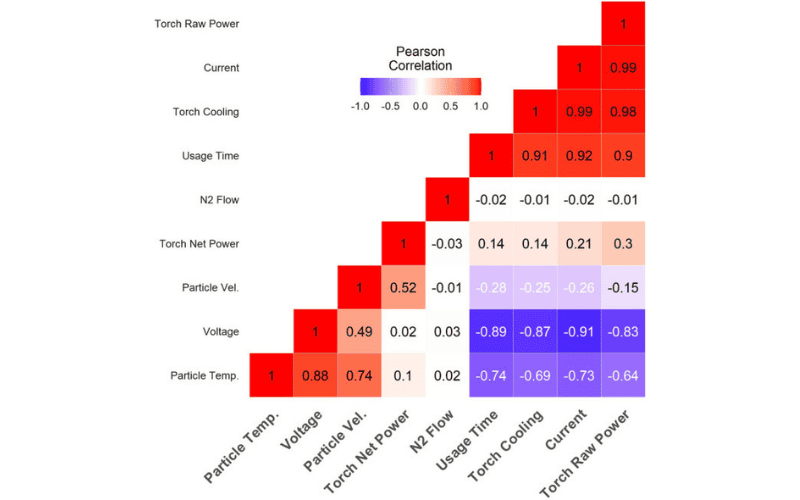January 6, 2023
Ensemble Methods for APS In-Flight Particle Temperature and Velocity Prediction Considering Torch Electrodes Ageing
The nonlinear relationship between the input process parameters and in-flight particle characteristics of the atmospheric plasma spray (APS) is of paramount importance for coating properties design and quality. It is also known that the ageing of torch electrodes affects this relationship. In recent years, machine learning algorithms have proven to be able to take into account such complex nonlinear interactions. This work illustrates the application of ensemble methods to predict the in-flight particle temperature and velocity during an APS process considering torch electrodes ageing. Experiments were performed to record simultaneously the input process parameters, the in-flight powder particle characteristics and the electrodes usage time. Random Forest (RF) and Gradient Boosting (GB) were used to rank and select the features for the APS process data recorded as the electrodes aged and the corresponding predictive models were compared. The time series aspect of the multivariate APS in-flight particle characteristics data is explored. Two strategies of time series embedding are considered. The first one simply embeds the attributes and the targets from the previous n time segments considered without any modification; whereas the second strategy first performs differencing to make the time series stationary before embedding. For the present application, RF is found to be more suitable than GB since RF can predict both the in-flight particle velocity and temperature simultaneously, properly considering the interactions between the two targets. On the other hand, GB can only predict these two targets one at a time. The superior performance of both embedded predictive models and the feature rankings of them suggest that it is better to consider the APS data as time series for the in-flight particle characteristic prediction. In particular, it is demonstrated that it is advantageous to first make the time series stationary using the traditional differencing technique, even when modeling using RF.
Key words: atmospheric plasma spray (APS), particle temperature, particle velocity, process modeling, time-dependent modeling
Originally published at Journal of Thermal Spray Technology (2023; 32(1): 175–187)
By K. R. Yu, C. V. Cojocaru, F. Ilinca, E. Irissou
